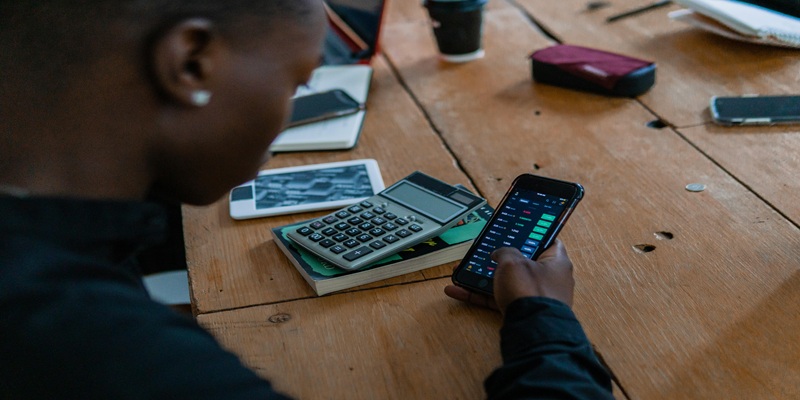How to Protect Your Digital Wallet from Theft

Digital wallets have become an essential tool for managing finances, making payments, and storing sensitive information. However, as their popularity grows, so does the risk of theft and fraud. Cybercriminals are constantly devising new ways to exploit vulnerabilities and steal from unsuspecting users. Protecting your digital wallet is no longer optional—it’s a necessity.
Understanding the Risks of Digital Wallet Theft
Before diving into protective measures, it’s important to understand the risks associated with digital wallets. These wallets store your payment information, cryptocurrencies, and other sensitive data, making them a prime target for hackers. Common threats include phishing attacks, malware, SIM swapping, and unauthorized access due to weak passwords. Additionally, once funds are stolen from a digital wallet, recovering them can be incredibly difficult, if not impossible. By recognizing these risks, you can take proactive steps to mitigate them.
Use Strong and Unique Passwords
One of the simplest yet most effective ways to protect your digital wallet is by using strong, unique passwords. Many people make the mistake of using easily guessable passwords or reusing the same password across multiple accounts. This is a major security risk. Instead, create a password that is at least 12 characters long and includes a mix of uppercase and lowercase letters, numbers, and special symbols. Avoid using personal information like birthdays or names, as these can be easily guessed.
Moreover, consider using a password manager to generate and store complex passwords. Password managers not only help you create strong passwords but also ensure you don’t forget them. By using unique passwords for each account, you reduce the risk of a single breach compromising multiple accounts.
Enable Two-Factor Authentication (2FA)
Two-factor authentication (2FA) adds an extra layer of security to your digital wallet. With 2FA enabled, even if someone manages to obtain your password, they won’t be able to access your account without the second authentication factor. This could be a code sent to your mobile device, a fingerprint scan, or a hardware security key.
Most digital wallet providers offer 2FA as an option, and it’s highly recommended to enable it. While it may add a few extra seconds to the login process, the added security is well worth the effort. Remember, the goal is to make it as difficult as possible for hackers to gain access to your wallet.
Keep Your Software Updated
Outdated software is one of the most common entry points for cybercriminals. Whether it’s your digital wallet app, operating system, or antivirus software, failing to update regularly can leave you vulnerable to attacks. Developers frequently release updates to patch security vulnerabilities and improve functionality. By keeping your software up to date, you ensure that you’re protected against the latest threats.
Set your devices to automatically install updates whenever possible. Additionally, only download digital wallet apps from official app stores or the provider’s website. Third-party app stores or unverified sources may host malicious software designed to steal your information.
Be Wary of Phishing Scams
Phishing scams are a common tactic used by cybercriminals to steal sensitive information. These scams often involve fake emails, text messages, or websites that appear to be from legitimate sources. For example, you might receive an email claiming to be from your digital wallet provider, asking you to verify your account details or click on a link.
To protect yourself, always verify the sender’s email address and avoid clicking on suspicious links. Legitimate companies will never ask for sensitive information via email or text. If you’re unsure about a message, contact the company directly through their official website or customer support channels.
Secure Your Mobile Device
Since many digital wallets are accessed through mobile devices, securing your phone is crucial. Start by enabling a strong passcode or biometric authentication, such as fingerprint or facial recognition. This ensures that even if your phone is lost or stolen, unauthorized users won’t be able to access your wallet.
Additionally, avoid connecting to unsecured public Wi-Fi networks, as these can be easily exploited by hackers. If you must use public Wi-Fi, consider using a virtual private network (VPN) to encrypt your internet connection. Lastly, install a reputable mobile security app to detect and block potential threats.
Backup Your Wallet
Backing up your digital wallet is an often-overlooked but essential step in protecting your funds. Most digital wallets provide an option to create a backup, usually in the form of a recovery phrase or seed. This phrase is a series of words that can be used to restore your wallet if your device is lost, stolen, or damaged.
Write down your recovery phrase and store it in a secure location, such as a safe or safety deposit box. Never store it digitally, as this increases the risk of it being hacked. By having a backup, you can regain access to your funds even in the worst-case scenario.
Monitor Your Wallet Activity Regularly
Regularly monitoring your digital wallet activity can help you detect unauthorized transactions early. Set up notifications for any transactions or changes to your account. If you notice any suspicious activity, act immediately by changing your passwords and contacting your wallet provider.
For cryptocurrency wallets, consider using a blockchain explorer to track transactions. This allows you to see where your funds are being sent and received, providing an additional layer of transparency.
Educate Yourself on Common Scams
Staying informed about the latest scams and tactics used by cybercriminals is one of the best ways to protect yourself. For instance, be cautious of fake wallet apps, Ponzi schemes, and fraudulent investment opportunities. Scammers often prey on individuals who are new to digital wallets or cryptocurrencies, so it’s important to do your research before making any decisions.
Join online communities or forums where you can learn from others’ experiences and stay updated on emerging threats. Knowledge is power, and the more you know, the better equipped you’ll be to avoid falling victim to scams.
Consider Using a Hardware Wallet
For those who store significant amounts of cryptocurrency, a hardware wallet is an excellent investment. Unlike software wallets, which are connected to the internet, hardware wallets store your private keys offline. This makes them virtually immune to online attacks.
Hardware wallets are small, portable devices that can be connected to your computer or smartphone when you need to make a transaction. While they come with a cost, the added security they provide is invaluable for high-value holdings.
Conclusion
Protecting your digital wallet from theft requires a combination of strong security practices and vigilance. By using strong passwords, enabling two-factor authentication, keeping your software updated, and staying informed about potential threats, you can significantly reduce the risk of falling victim to cybercriminals. Remember, the security of your digital wallet is ultimately in your hands. Take the necessary steps today to safeguard your funds and enjoy peace of mind in the digital world.
By following these tips, you’ll not only protect your digital wallet but also ensure that your financial future remains secure. Stay proactive, stay informed, and stay safe.





